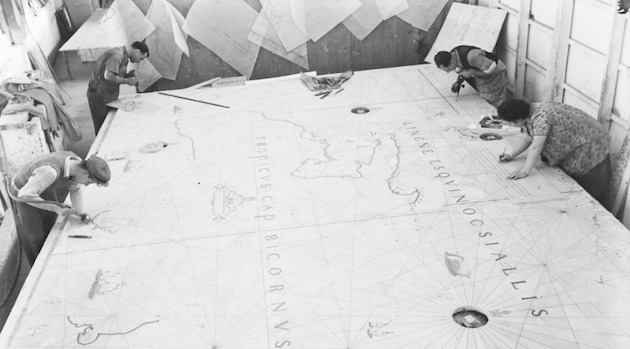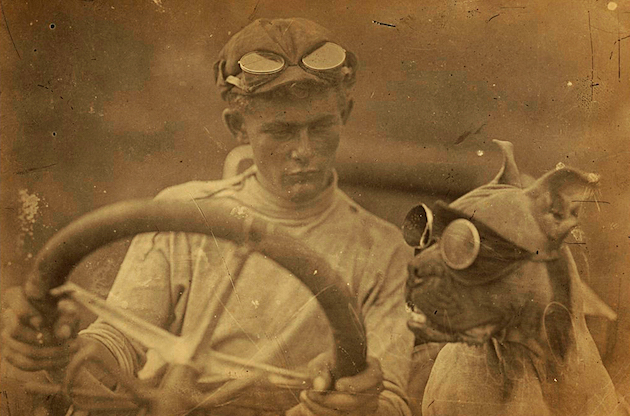Some of the mental tools aviators use to prepare them for (and see them through) hair-raising emergencies might also be of use in a PI’s kit.
Twenty years ago today, I earned my private pilot’s license. Although I passed my flight test that day, I wasn’t a particularly good pilot yet—just competent enough to keep myself and my passengers safe.
The reasonably good piloting would come later, long after I’d passed the tests for the instrument and multiengine ratings, commercial license, and flight instructor certificate. It took years and a few thousand hours in the logbook—hours of landing in blistering crosswinds, weaving between storm cells, and punching through low cloud decks. It took teaching other people to fly and handling a couple of minor in-flight emergencies, one as a student, and one as an instructor.
In a word, it took experience.
And so it is with becoming more than just a competent private investigator. You may know the regulations and the techniques. You may be a whiz at document searches or interviews. You may be up on all the latest spy-tech gadgetry. But until you’ve encountered a wide variety of what the universe can throw at you, you’re not there yet.
[quote align=”center” color=”#999999″]It’s how you react when the universe does its worst that shows you what you’re made of. [/quote]
It’s how you react when the universe does its worst that shows you what you’re made of. Having logged time in the air as a pilot and in the field as a PI, I’ve found that some of the mental tools and techniques we aviators use to prepare us for, and see us through, hair-raising moments might also be of use in a PI’s kit.
Here are some of those tools and techniques:
1. Use your emergency checklist.
I was reciting my before-landing checklist in a Piper Apache one warm fall evening when I noticed the small green light. It wasn’t on. And that was a bit of a problem.
“Volker,” I said to my instructor, eyeing the light, “two green.” As in, two, not three, green lights were on, letting us know that the main gear wheels were down and locked … and that the nose gear might not be.
“OK, what do we do now?” he said, calmly continuing the lesson, as if this were just another simulated emergency. Fortunately, it was a slow-moving emergency, giving us plenty of time to climb out and proceed through every gear-failure emergency checklist in the flight manual. It was the best flying lesson I ever had. We exhausted our alternatives, and Volker did a no-nosewheel emergency landing so masterful, we walked away without even a bruise. That’s good piloting.
[quote align=”center” color=”#999999″]If you’ve taken the time to think through various situations you might encounter and how to handle each, you’ll have a mental checklist at the ready to carry you through—and you won’t have to wing it.[/quote]
When my Cessna threw a valve during a flight lesson I was giving a few years later, I didn’t have time to read any checklists. But I didn’t need to. The checklist was in my head. I’d practiced what to do in case of a partial power loss hundreds of times, with a handful of instructors and dozens of students. The rote mantra of that mental checklist took over and guided us safely to an emergency landing.
As a private investigator, you’ll most likely encounter a range of emergencies—some life-threatening, others merely vexing. When a witness opens the door just enough for you to see his gun pointed at you, or when the cop taps on your window during a suburban surveillance job, you won’t have time to consult any PI operations manuals.
But if you’ve taken the time to think through various situations you might encounter and how you might handle each, you’ll have a mental checklist at the ready to carry you through—and you won’t have to wing it.
2. Do a thorough flight plan and pre-flight inspection.
Students learning cross-country navigation sit for hours over aeronautical charts, plotting a course and marking checkpoints. They calculate a weight-and-balance for each flight and review aircraft performance charts to make sure the runway they have is not shorter than the runway they need that day. They call a weather briefer to find out about visibilities, clouds, and wind. And they examine every inch of the airplane before a flight to be sure their craft is airworthy.
Experienced pilots do these things, too, although some of the planning details may be a bit more abbreviated and internalized. They might skip the pencil marks on the sectional map, say. But all good pilots learn everything they can about aircraft and atmosphere before they take off—in hopes of preventing that worst-ever sensation: I wish I were down there instead of up here right now.
Pilots don’t like to get surprised—by lousy weather or funny engine noises—so they do everything they can to stave off the unexpected. Of course, sometimes forecasts change, and even a good preflight check might not warn you that a valve or a nose wheel is not long for the planet. But knowing as much as you can about equipment and environment—and making decisions accordingly—can decrease your chances of surprise and demise.
[quote align=”center” color=”#999999″]As a private investigator, how carefully do you plan your surveillance missions?[/quote]
As a private investigator, how carefully do you plan your surveillance missions? Do you study a map and drive the area before setting up your team? Do you know all routes of ingress and egress? Do you know the subject’s frequent haunts and likely accomplices (plus what vehicles they drive)? And once you leave the immediate vicinity of your surveillance starting point, do you know the area well enough to follow without getting lost or busted on a dead-end street?
Taking a few hours to orient yourself (and to be sure all your gear is present, working, charged, and ready with empty data storage) can make a massive difference in the success of your surveillance job—especially if you encounter a nasty surprise of some sort.
Most of all, if you do a thorough briefing and get a sense that something isn’t quite right, it might be best to decide not to fly that day.
3. Aviate. Navigate. Communicate.
Pilots learn a lot of simple, mantra-like phrases and acronyms to apply by rote to all sorts of problems. Theses phrases seem kind of silly until you need one of them.
Because if you need one, it means something has gone terribly wrong. When that happens, your brain is thrown into momentary chaos, frantically trying to figure out why there is suddenly a weird silence out front instead of the usual rumbling of your engine.
Aviate.
“Trim for best glide speed,” you tell yourself (as your blood pressure spikes). This is the mantra that prompts you to angle the nose for a descent at the speed that gives you the most possible distance to glide—and the most possible time to problem-solve before the ground reaches you.
Those tasks behind you, you can then start to figure out what caused the engine to get so quiet in the first place (and hopefully, how to re-start it).
The overarching mantra that covers pretty much all in-flight problems is the heading for this section: Aviate, navigate, communicate. “Aviate” means keep flying the plane, pay attention to what’s going on inside and outside, and take whatever initial actions you need to ensure you continue flying for as long as possible—like trimming for best glide.
[quote align=”center” color=”#999999″]That initial action calms your mind enough to get it working to fix whatever caused the problem.[/quote]
That initial action not only keeps you alive longer; it also calms your mind enough to get it working to fix whatever caused the problem: Is the engine fuel starved or overheated? Can I find the problem and restart? Or shall I find a nice landing spot instead?
Navigate.
That problem-solving second step is what I’d call the “Navigate” phase of emergency procedures. It’s what you do once you’re through the initial What the hell happened phase and are starting to figure out what you’re going to do about it and what direction you need to head next.
Communicate.
Once all that’s done and you’ve decided, say, to make an off-field landing, it’s time to “communicate”—that’s when you start working radios, to let somebody know where to send the ambulances. That’s the final third phase, and never the first. “Don’t fly the radios,” instructors like to say, which means, don’t start calling controllers before you’ve first addressed the more urgent problem of your plane’s radically altered state of airworthiness.
You can apply this mantra to your life as a surveillance operative or criminal defense investigator, if not quite as literally. In essence, “aviate” just means keep driving (or talking or observing), stay aware of your surroundings, and keep your mind ahead of events instead of letting events get ahead of you. Try to think about what’s about to happen (or could happen) in the next few minutes.
[quote align=”center” color=”#999999″]“Aviate” just means keep driving (or talking or observing), stay aware of your surroundings, and keep your mind ahead of events instead of letting events get ahead of you.[/quote]
That way, when surprises occur, you’re not suddenly waking up from a hot-day surveillance daydream, scrambling to catch up, and thinking, “S#@+! What just happened? Was that the subject racing by driving a police cruiser, giving me the finger?”
“Navigate,” in a figurative sense, just means find yourself, catch up, reset and re-evaluate. Take the new information (including any surprises) and decide what needs to happen next, and where you need to go. Step back and look at the whole scene. Picture the map in your head and place yourself in it, playing out likely scenarios. Did the subject steal a police cruiser? Or is he a police officer? And how did that info not come up in the intake interview?
“Communicate” comes last: Do you need to call in reinforcements? Or should you, maybe, call the client and ask why exactly she didn’t mention that her ex-husband the night security guard also happened to have a day job?
Communication is the least urgent step, but it’s still an important one: It’s the call that gets the fire trucks there on time, mitigates the damage, or clarifies the deeply unclear. Sometimes, it’s the finishing touch that saves the day—an apology, an explanation, or a thorough, transparent chat with the client.
Conclusion
Pilots and investigators aren’t so different. They see the world from odd angles—pilots, from high above, and PIs, deep into life’s darker corners. But even though they have great stories to tell, most of the time their work isn’t as exciting as most people think. And when it is, it’s often because something very bad is happening. (Thus, the stories.)
That’s why aviators and PIs need similar strategies for dealing with exciting moments. First, they need knowledge and training on what actions to take when things go FUBAR. Most of all, they need to practice and apply that training—to quiet the mental chaos and organize their response to the excitement … and later, to decide what aspects of the story they plan to share, and what parts they’d just as soon leave out.


![Nancy Bird and Jack Kingsford-Smith standing next to a de Havilland DH.60M Moth (VH-UOZ), Mascot [?], New South Wales, ca. 1933, 1 / E. A. Crome](https://pursuitmag.com/wp-content/uploads/2015/03/tumblr_niqmj6Sfma1sfie3io1_1280.jpg)



